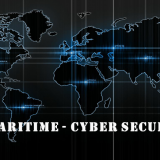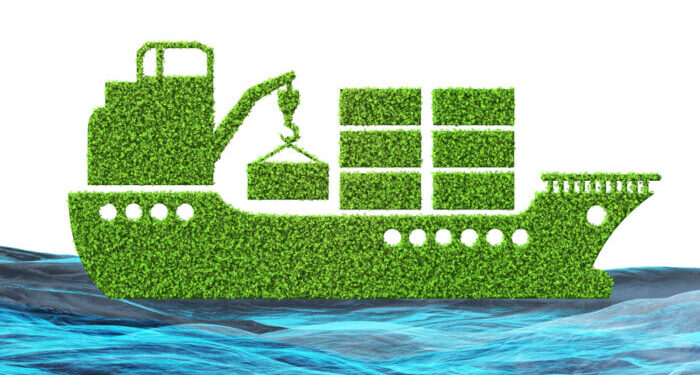Despite that COVID-19 continues to attracting a lot of our attention and making our lives difficult, 2022 is going to be a year of focus on the environment. Following COP26, the message is clear; we need to act now against the climate change and for the maritime industry, IMO has already paved the way with the enforcement of strict environmental rules; nonetheless, maritime safety will always be a key concern for the industry.
Let’s have a look at what to expect within this new year from a regulatory perspective
First reporting period for UK MRV
As a result of Brexit, EU MRV no longer applies to ships visiting UK ports. More specifically, the UK Government, in last September, released guidance on the application of its own scheme for monitoring, reporting and verifying (UK MRV) carbon dioxide (CO2) emissions. Ship operators should begin collecting emissions data for their ships under the UK MRV regime from 1 January 2022.
Ships over 5,000 gross tonnes, transporting cargo and/or passengers for commercial purposes to and from UK ports, between UK ports or within UK ports (including while at berth), are subject to the UK MRV regime. The same exceptions apply to vessels under the UK MRV regime (e.g. for warships), that apply under the EU MRV regime. Ship operators must have in place an assessed monitoring plan before data collection begins. The assessment of the monitoring plan and the verification of the annual emission report for each ship needs to be done by an accredited verifier. By 30 April following each reporting period, a verified emissions report must be submitted to the UK Administration covering the previous reporting period. By 30 June following each reporting period, a valid Document of Compliance (DoC) must be carried on board each vessel covering the previous reporting period.
SEEMP revision to include EEXI and CDI within 2022
During MEPC 76 in June 2021, the IMO adopted measures that will require all ships to calculate their Energy Efficiency Existing Ship Index (EEXI) following technical means to improve their energy efficiency and to establish their annual operational carbon intensity indicator (CII) and CII rating. The requirements will enter into force on 1st of January 2023, but until then, ship operators need to revise their Ship Energy Efficiency Management Plans (SEEMP) accordingly. In particular, the amendments to MARPOL Annex VI (adopted in a consolidated revised Annex VI) are expected to enter into force on 1 November 2022, with the requirements for EEXI and CII certification coming into effect from 1 January 2023. This means that the first annual reporting on carbon intensity will be completed in 2023, with the first rating given in 2024, IMO mentions.
A new era in SIRE inspection program
The new SIRE 2.0 by OCIMF is expected to become operational within 2022 and for the first time will take into consideration the human element to ensure inspectors are sensitive to all pressures onboard. It will feature the following four key areas of focus:
- Accuracy: Facilitating an accurate description of how key safety and operational risks are managed and verified onboard a vessel.
- Capability: Training and developing inspectors who are of the highest quality, consistency and integrity.
- Reliability: Strengthening vessel inspections and reducing the number of repeat inspections required.
- Adaptability: More rapid response to human factors, industry changes, regulatory framework updates and technology advances.
In future SIRE 2.0 will encompass all of OCIMF’s inspection programmes. This includes OCIMF’s Barge Inspection Report programme (BIRE) and Offshore Vessel Inspection Database (OVID). However, in an exclusive interview, Mr David Savage, who was responsible for the development and introduction of the SIRE Inspector Accreditation Programme back in 2000, said that the additional workload that comes with SIRE2 will impact both ship and shore staff, at least during the start-up months until familiarity and routines are established.
PSCOs to focus on STCW from 1 September to 30 November
This year, the planned Concentrated Inspections Campaigns across all MoUs will focus on STCW. In particular, for three months, PSC Officers will check topics relevant with STCW requirements to ensure full compliance.
In the past, a focused CIC took place in 2014 by Paris and Tokyo MoUs along with others, with the purpose to establish that watchkeeping personnel are meeting the requirements regarding hours of rest as per STCW 78 as amended (including the Manila amendments). For this year’s CIC, it remains for the questionnaire to be issued within summer in order to view the focus items of control.
Focused Inspection Campaign on planned maintenance in Australia
AMSA announced that a Focused Inspection Campaign (FIC) on Planned Maintenance will be conducted from 15 January 2022 to 30 March 2022. As such, AMSA surveyors will undertake the FIC in conjunction with a normal port or flag State control inspection and any port State control deficiencies will be reported to regional port State control databases.
The purpose of the FIC is to determine the level of compliance with the maintenance requirements of the International Conventions. AMSA PSCOs will be using a specific checklist when inspecting ships as part of the planned maintenance FIC and therefore, ship managers need to be prepared accordingly. Planned maintenance is an important aspect when considering seaworthiness.
Amendments to MARPOL Annex VI : Procedures for FO Sampling
Annex VI has been amended to introduce definitions distinguishing between “in-use” and “on board” fuel oil samples taken from a vessel. The entirety of Appendix VI of MARPOL Annex VI has also been revised to simplify the verification procedure for the “MARPOL delivered fuel oil sample” and to add verification procedures for the “in-use sample” and the “on board sample”, effective from 1st of April, 2022. This regulatory update applies to all ships ≥400gt and keel laid date ≥01/04/2022.
Amendments to regulations 14 and 18 of MARPOL Annex VI regarding sulphur content
Effective from 1st of April, 2022, new paragraphs 8 and 9 are added for ‘In-use and on board fuel oil sampling and testing’ and paragraphs 10 to 13 for ‘In-use fuel oil sampling point’ under regulation 14.
The verification procedure part 2 is to be followed in the new Verification procedures of Appendix VI of MARPOL Annex VI. For the test results, 95% confidence will be allowed (limit X + 0.59R) and the acceptable sulphur limits are extended to 0.11% and 0.53% for 0.10% and 0.5% respectively. Paragraph 8.2 has been replaced under regulation 18.
Amendments to the BWM Convention
To clarify the conduct of statutory surveys for Ballast Water Management Systems (BWMS), MEPC 75 adopted the amendments proposed to BWM regarding commissioning testing of ballast water management systems (Regulation E-1) and the form of the International Ballast Water Management Certificate (Appendix I), effective from 1st of June 2022.
Consequently, revised Guidance for the commissioning testing of ballast water management systems is available as BWM.2/Circ.70/Rev.1. The commissioning testing is to be conducted by an accredited entity which is independent from the BWMS manufacturer or supplier and one that is approved by the flag Administration or the RO working on its behalf.
Amendments to SOLAS VII regarding IMDG Code
In addition to the periodic review of carriage requirements for new and existing substances, these amendments introduce a new handling code for medical waste and other updated guidance, effective from June, 2022.
Amendments to MARPOL Annex VI regarding EEDI Regulations
Annex has been amended to mandate the reporting of required and attained EEDI values to the IMO. Tables providing EEDI reduction factors have been replaced. These amendments will come into force from November, 2022.
Source: skanregistry



